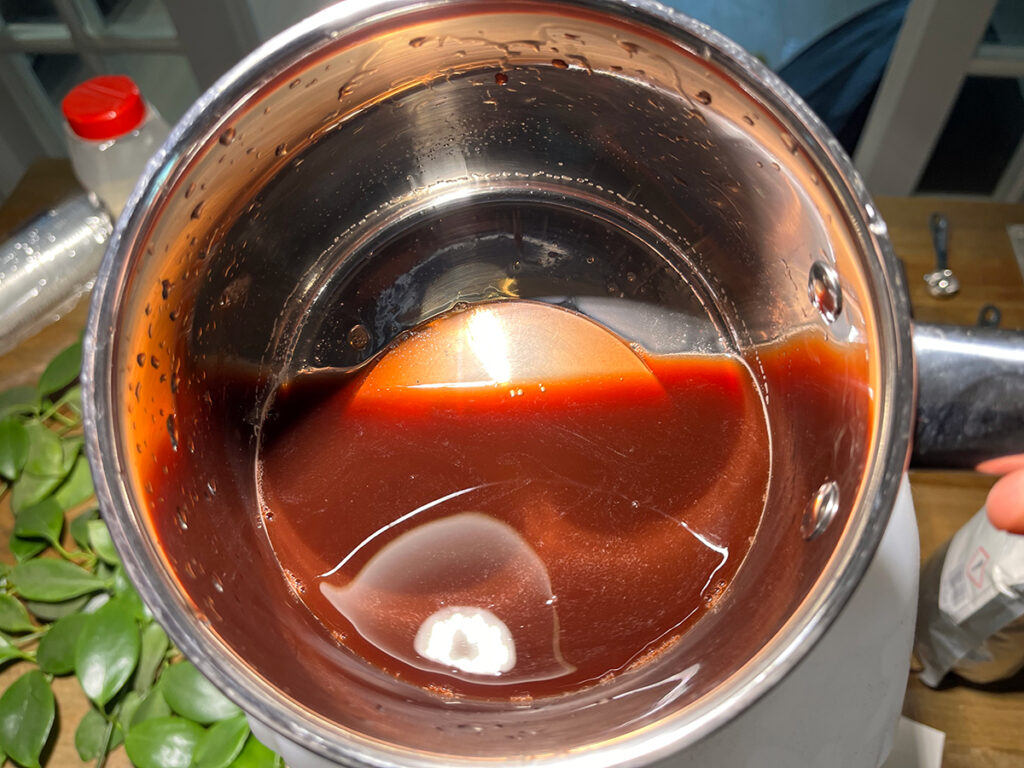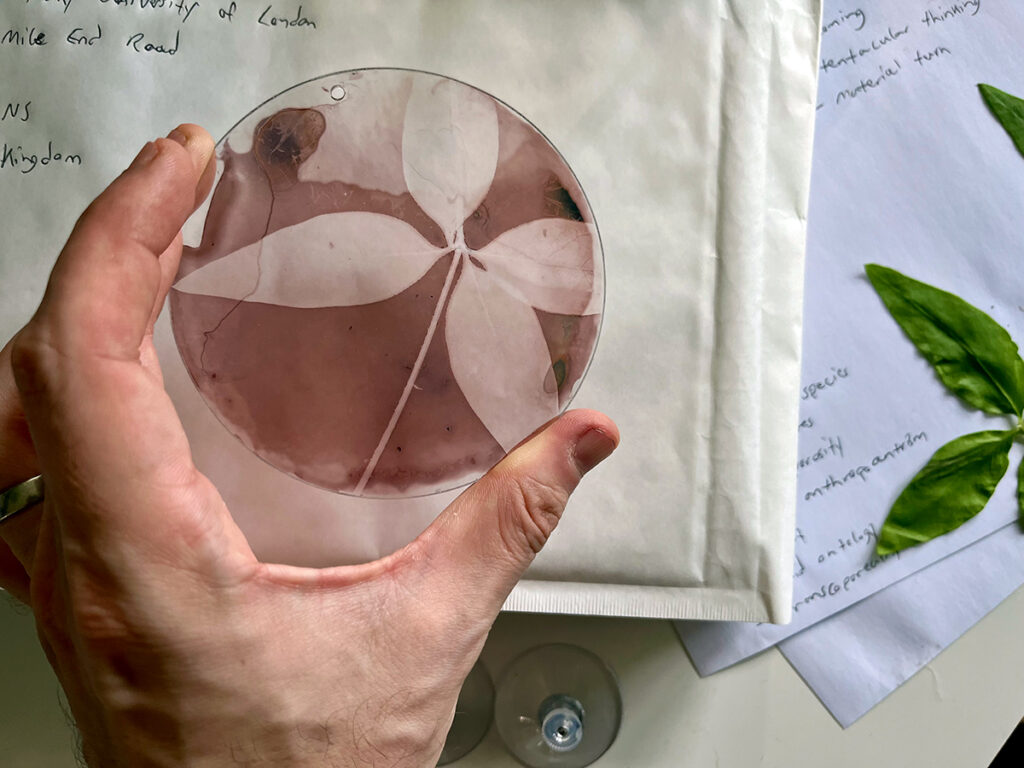
Dyers’ Familiar is an online workshop—incorporating a pre-prepared bespoke cyanotype kit—that builds individual and collective place-based relationships with participants’ surrounding vegetal life. Working with a pre-sensitised light-sensitive agar cyanotype coated glass plate, you will engage in a guided alchemical ritual where the outcome is entirely dependent on the dose.
Working with plants foraged from your surroundings that hold dye properties and/or high tannin contents, you will use the foliage as a negative to print as a cyanotype on glass. You will then use the same plant’s materiality to shift the intrinsic blue colour.
Your pre-packaged kit contains the following materials:
- 1/2 tsp citric acid (developing aid)
- 1/2 tsp sodium carbonate (‘bleach’)
- 2 pre-sensitised paper test strips
- 1 pre-sensitised glass circle
- suction cup
- twine piece
In advance of the workshop, please follow these steps:
Step One
Locate and forage a plant with dyes or tannins you would like to get to know better from your surroundings—this could be your garden, windowsill, park, city centre planters, woods, etc. Try to collect at least two to three handfuls-worth; the more, the better. If you need assistance deciding on a plant, you can conduct an internet search with something like ‘[your location] dye plant’ or ‘[your location] plant with tannins’. Common high-tannin plants include tea, coffee, and grapes.
Step Two
Once your have your plant material to hand, select a few stems or leaves that you would like to use to make your image. Keep the rest for a later step! Unwrap your packet, minding that the sensitised plate and test strips must be handled under low light as to not accidentally pre-expose them. Locate your test strips: they’re small bits of paper that are fluorescent green on one side (the cyanotype emulsion side).
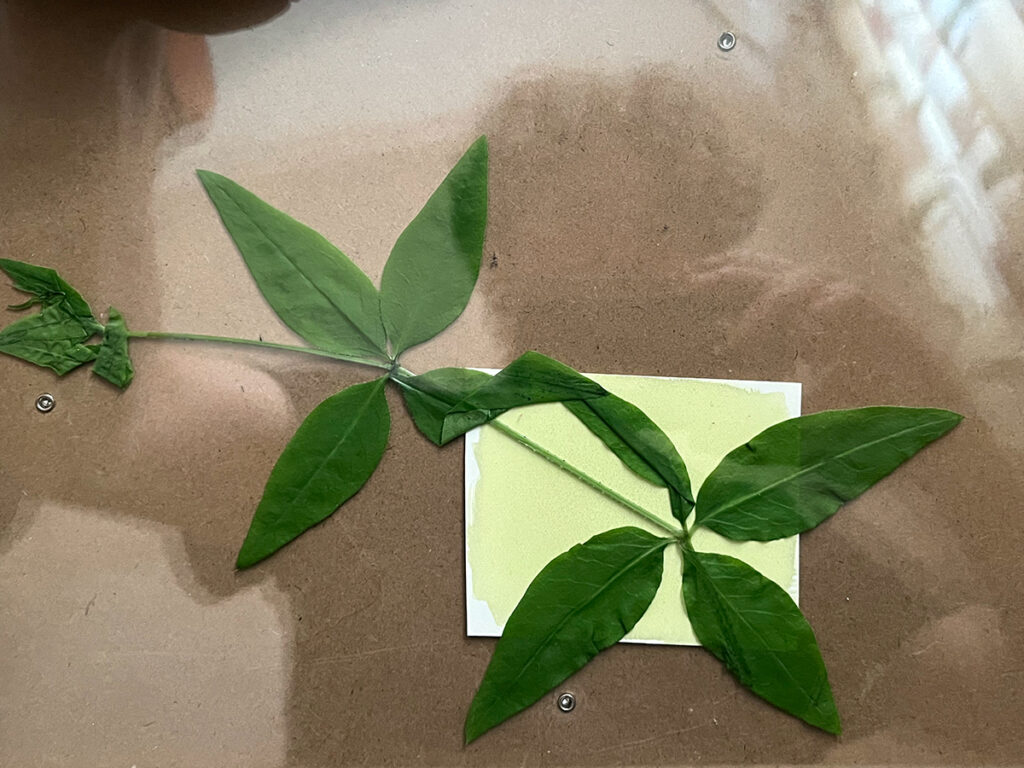
Next, using a picture frame, piece of glass or perspex/plexiglass, etc, sandwich your test strip emulsion-side up with your plant material over the top. Your plant material is your ‘negative’—light will pass through the thinner parts of the leaf, leaving an impression on the light-sensitive surface, while its thicker parts block the light.
You don’t have to use glass/perspex, but you will get a sharper image if you do. Find another piece of opaque board (other options are your mobile phone, a book, piece of cardboard, etc.) and cover the whole piece of paper. Place the assemblage in a sunny window, outside, or under a plant grow light, and slowly move down the paper every 15 minutes for 90 minutes to create a step wedge exposure test.
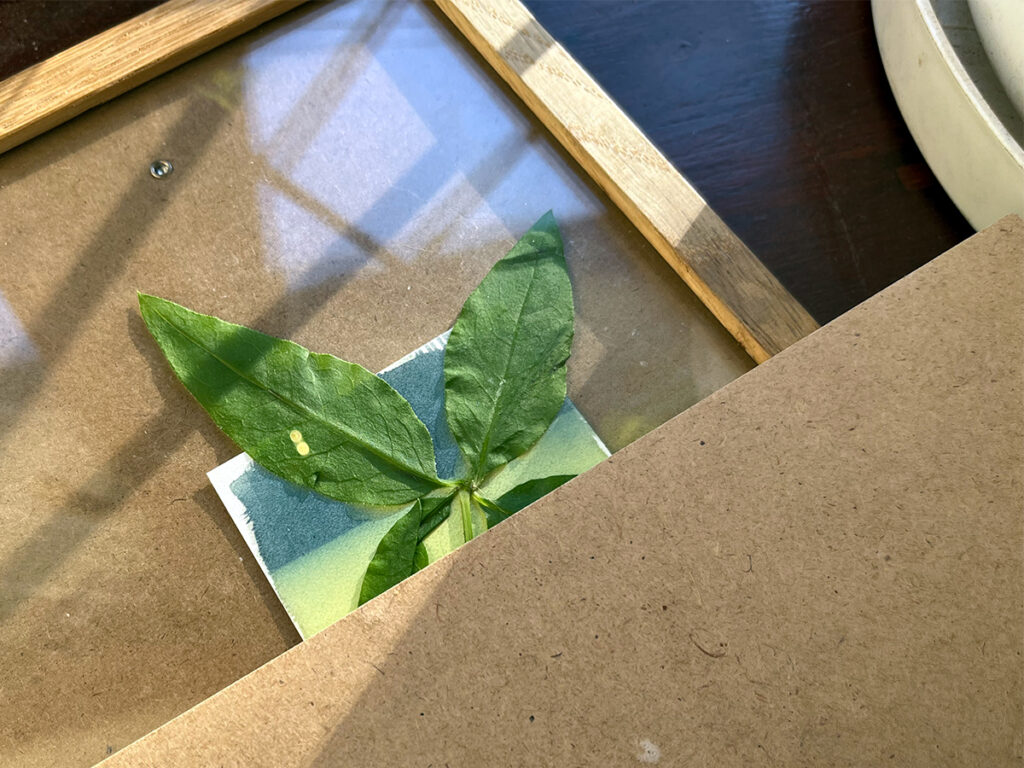
Step Three
Once you’ve completed your step wedge test, disassemble your printing frame and prepare your wash. Find a small sauce pan, plastic tray, bowl, or some other container that will fit your test strip. Then, find the citric acid in your kit and collect half of it, mixing it with 500ml water (tap water is fine). This is your ‘developer’. Place your test strip in the bath and gently rock or move the paper around to wash out the unexposed chemistry for about 5 minutes.
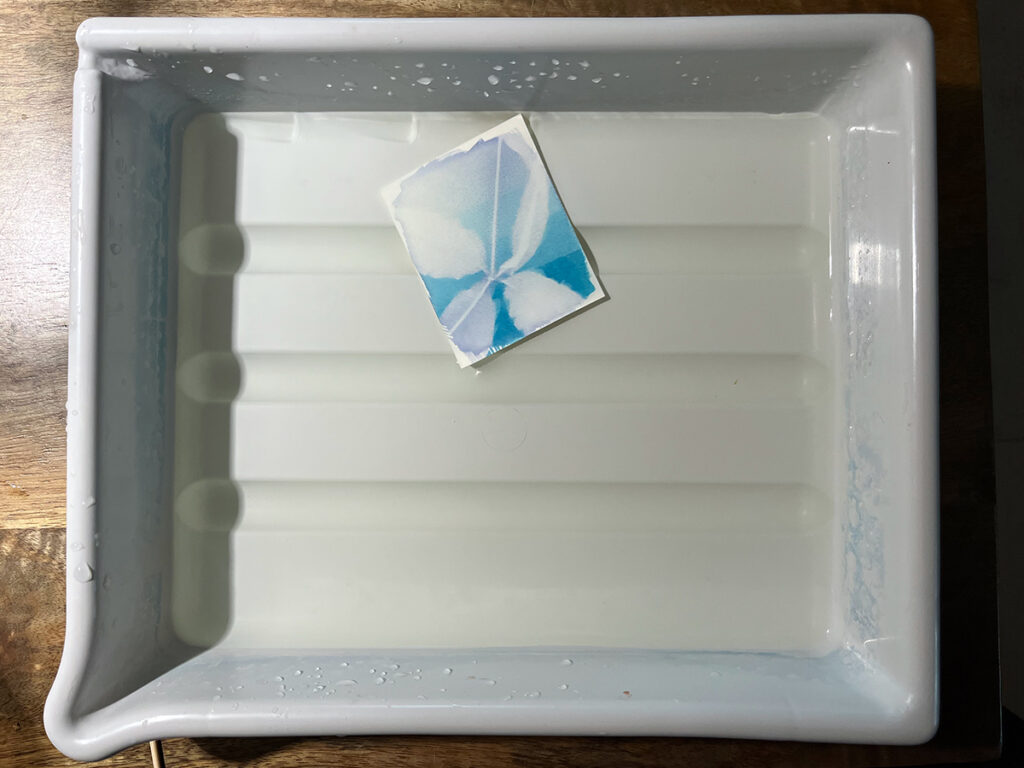
If you’re not satisfied with the level of detail, you can use the spare test strip to try again, increasing the time. Allow to dry and then read the test strip for your desired exposure time (how much detail you want in the foliage).
Step Four
Once you’re satisfied with the level of detail, select more foliage alongside the sensitised glass circle in your kit, reassemble your print frame without any opaque board covering any portion of the plate, and expose for the time chosen on your test strip plus 30%. This is to compensate for the glass’s transparency and different absorption between paper and agar.
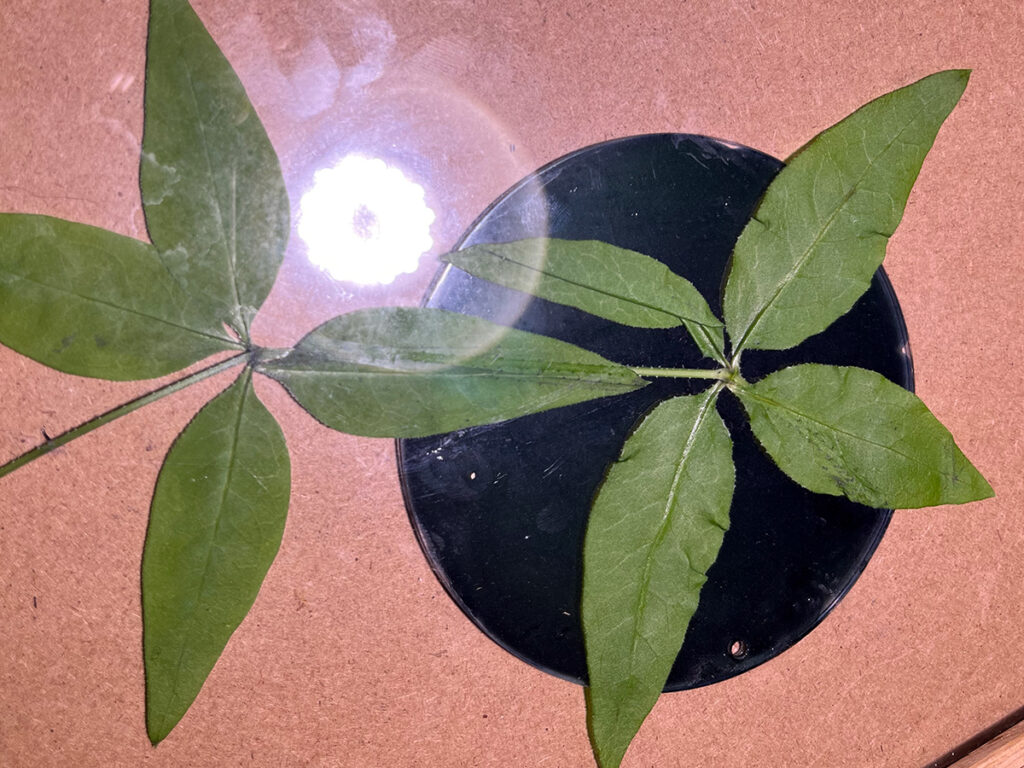
Step Five
Disassemble your printing frame once more, use the same developer, or make a new solution with the remaining citric acid in your kit. If you run out, you can also add a small amount of vinegar to the bath instead. Develop your plate and allow it to dry, being careful to avoid touching the surface while it is wet.
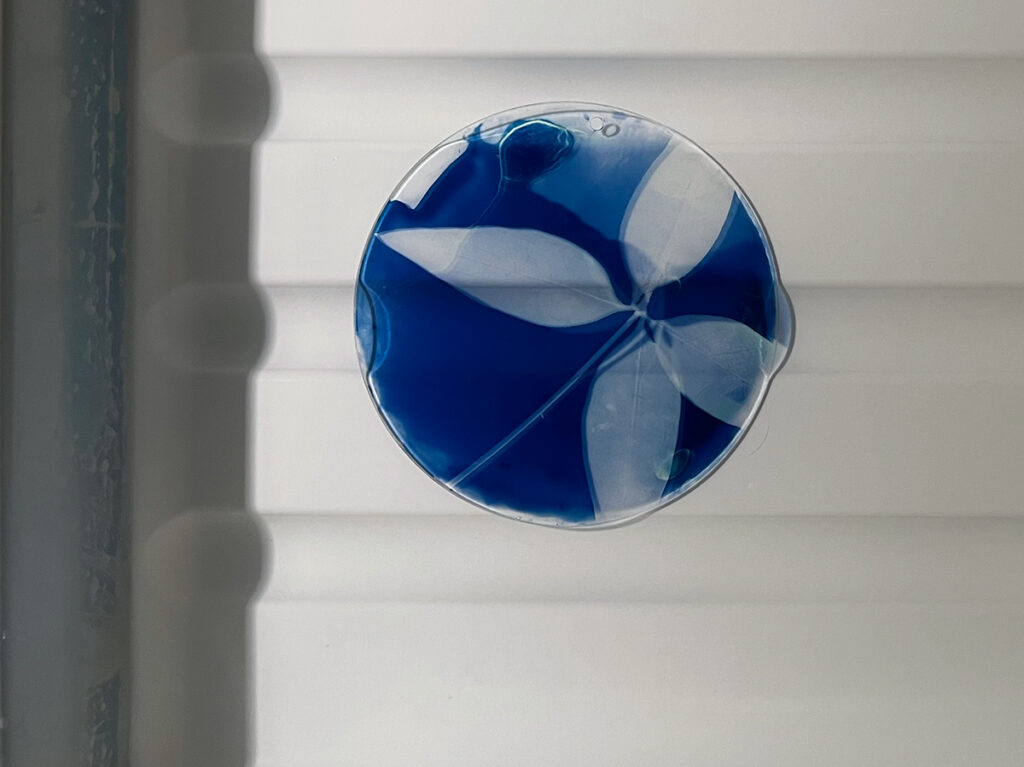
Allow your plate to fully dry and keep it somewhere safe until the day of the workshop.
Step Six
Return to the remainder of your foliage and soak it in a glass or bowl of water for 8 hours or overnight. Then add the foliage and water to a small sauce pan and simmer over medium heat for 45min (add more water if you need to), being careful to avoid going over 65ºC or 150ºF, where possible. Strain the resulting solution, which will form the basis of your toner. Reserve the liquid for the workshop on the day.
